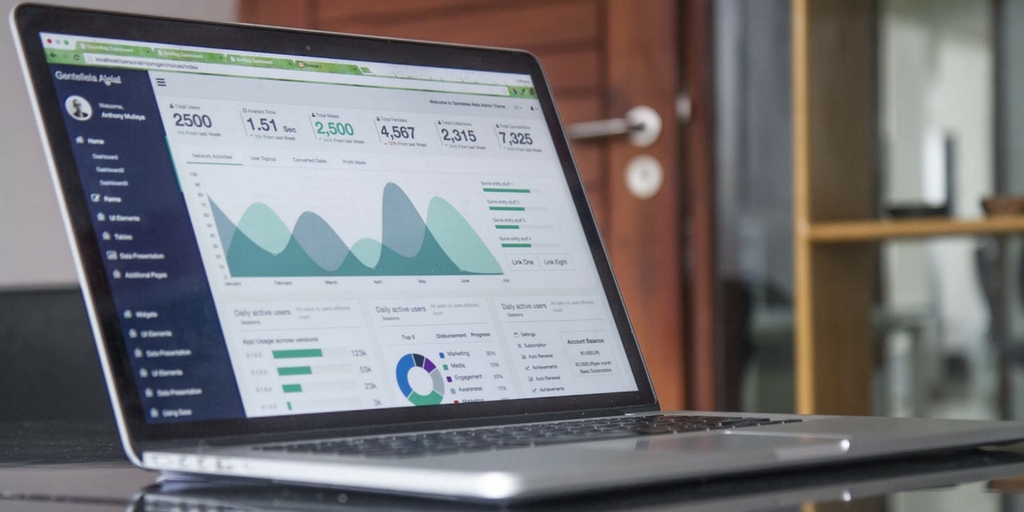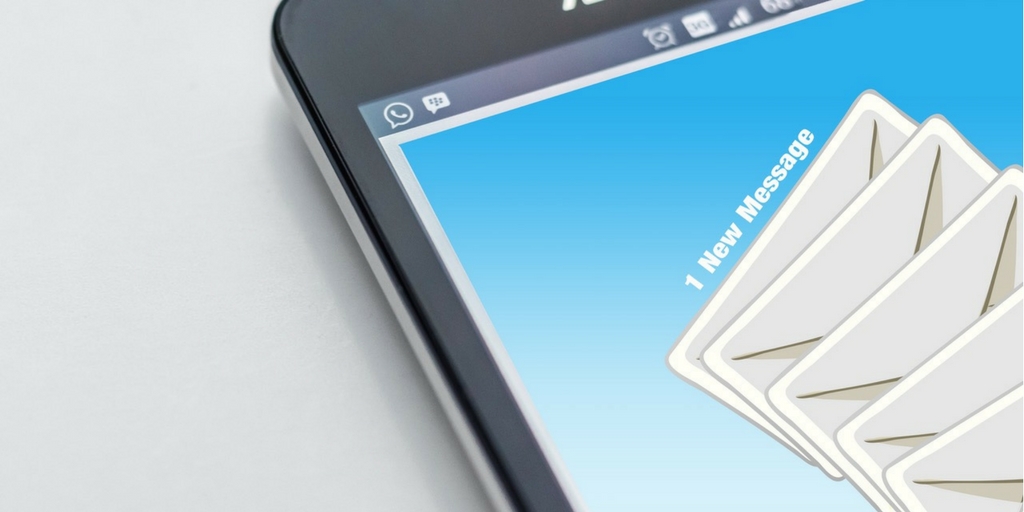
by Fronetics | Nov 1, 2016 | Blog, Content Marketing, Marketing
Companies dedicate enormous resources to ramping up email marketing programs around seasonal pushes, like the holidays. But do they actually get more customers?
We all know the feeling — how the office buzzes, the anticipation starts to build. Busy season is around the corner, and your team is getting ready for the big push to make this the most successful year yet. But have you ever wondered if all the extra hours and money you pour into these seasonal marketing campaigns are worth it?
As the holidays approach, many businesses, especially retailers and e-commerce companies, are starting to ask themselves this question — or, at least, they should be. At what point will creating and sending another email to your database be detrimental, rather than beneficial? How much should your messaging change? Should you try something totally new and different to catch customers’ attention?
IBM Marketing Cloud’s 2016 Email Marketing Metrics Benchmark Study has some interesting answers to these questions.
The holiday email-marketing study
The 2016 Email Marketing Metrics Benchmark Study is an annual report that offers insight on how many people open, click, and ignore messages from email marketers around the globe. It aggregates data from messages sent by nearly 750 companies representing 3,000 brands in 40 countries. This year, the study also examined the performance of holiday messaging versus non-holiday messaging for retail/e-commerce vendors.
Most retailers send at least double the amount of emails during the holidays (defined as Thanksgiving to New Year’s) as they do during the non-holiday period. They entice potential buyers with aggressive pricing, free shipping, and deal deadlines. But do these more frequent, offer-loaded emails make a difference? Let’s take a look.
Click and open rates
In almost every respect, non-holiday emails outperformed holiday emails in a significant way. Open rates during the holidays were 18.8% lower than during non-holidays. Mean click-through rates differed by 28%. Mean click-to-open rates remained similar.
There are several takeaways here. Yes, open rates were lower during the holidays. But because the volume of emails sent during this period increased significantly, it’s likely that the total number of emails opened was greater during the holidays than non-holiday period. That’s a positive thing.
That being said, click-through rates decreased pretty dramatically. You would expect that special holiday offers would entice recipients to click through more often. But increased email volume seemed to detract from such motivating offers.
Similarly, click-to-open rates measure the effectiveness of email content (in driving a reader to take the requested action, e.g. redeem an offer). These rates remained relatively similar across both time periods, which is surprising. With more people looking to make purchases during the holidays, you would think that more recipients would act on the offers presented in the holiday emails. Again, increased email volume seemed to detract from their doing so.
List churn metrics
Increased email volume meant retailers processed more hard bounces, unsubscribes, and spam complaints during the holidays.
Here are the takeaways. Firstly, more emails equal more hard bounces. That seems logical enough.
Though unsubscribe and spam-complaint rates were slightly lower during the holidays, that doesn’t equal success. Because of the frequency math effect, retailers are losing a larger number of subscribers because they are sending more emails.
Say your company sends one email per week during the year, and two emails per week during the holidays. If you usually have 10 people unsubscribe per week during the year, approximately 20 people are unsubscribing during holiday weeks. That can deplete your database pretty quickly — especially if you’re more than doubling your email volume.
Conclusions
The folks at IBM Marketing Cloud had some interesting thoughts about their findings and how to increase the effectiveness of holiday emails.
For one, while increasing the number of emails you send during the holidays isn’t inherently a bad idea, as more emails equates to more total opens, many retailers are going about it the wrong way, as is evidenced by lagging click-through rates.
That’s because when many marketers ramp up email volume, they forget all the best practices that make their emails successful in the first place: personalization, targeted content, and offers that are relevant to the specific recipient based on his/her place in the buyer’s journey. Personalizing email content will help improve click-through and click-to-open rates, which could dramatically impact sales given the increased email volume.
Further, a courtesy head’s up about increasing email frequency could reduce the number of opt-outs and spam complaints. IBM Marketing Cloud suggests that companies should “consider sending an email to subscribers before you ramp up frequency, explaining the increased frequency, what kind of promotions they can expect, and shipping and return policies. Include prominent language about frequency options and link to your preference center. In addition, revise your preference-center language and options to encourage unsubscribers to opt down or snooze emails instead of simply opting out.”
Application across verticals
While the weeks between Thanksgiving and New Year’s are not every business’s busy season, the findings from this study are still applicable. If your prospects experience an uptick in marketing emails during a particular season from you and your competitors, you’re likely to experience similar results.
The key in ramping up emails prior to a big push is to retain quality — that is, customizing content and offers to the particular recipient. If you can’t scale, then you shouldn’t send.
Furthermore, this study speaks to the value of a strategic, year-round marketing program that builds brand awareness and customer loyalty, regardless of how close the busy season is. If prospects grow to know and trust your brand, they’ll turn to you when it’s time to buy, regardless of how many emails you send them in the weeks prior.
Related posts:

by Fronetics | Mar 20, 2018 | Blog, Content Marketing, Logistics, Marketing, Strategy, Supply Chain
Email workflows will automatically deliver content to leads at designated intervals, inviting them to take action and helping them to move down the sales funnel.
We’ve written before about marketing automation, and what it can do for the supply chain in term of cost- and time-savings. It’s time to get specific about how you can put marketing automation technology to work for you.
There are quite a few highly effective automation tools (including chatbots). Today we’re going to talk about email workflows.
What are email workflows?
These resource-saving tools consist of a series of emails that automatically send to a user at designated intervals. Based on actions a user has taken on your website, they receive emails relating to their interests — or where they are in the sales process — automatically.
Take this example: If someone downloads a resource from your website, an automated email workflow can be triggered to send a thank-you email within 24 hours. After the initial email comes a series of lead-nurturing emails over the next few weeks, continuing to educate the lead about a subject they are interested in, based on the resource they downloaded.
Why use email workflows
HubSpot reports that businesses using this kind of marketing automation to nurture leads receive a 451% increase in qualified leads. Email workflows work, period.
At Fronetics, we recommend clients create email workflows all the time. It allows them to deliver relevant, timely content to leads through automation. That means a sales person doesn’t have to keep track of when a download occurred and remember to send follow-up emails with lead-nurturing content.
Email workflows let you trigger emails based on any information you have about your leads, so you can send the ideal message at the ideal time. Here are some ideas of email workflows you can try:
- Topic workflows, triggered by page views or content offer downloads
- Lead-nurturing workflow, triggered by top-of-the-funnel conversions
- Re-engagment workflow, triggered when a contact has been inactive for a while
- Upsell workflow, triggered by past purchases
- Blog subscriber welcome workflow, triggered when someone subscribes to your blog
By taking the time to create thoughtful email workflows on the front end, you will save your team a lot of time and effort during the sales process. It’s this kind of marketing automation that will streamline your sales and marketing efforts, freeing you up to complete other important tasks.
Related posts:


by Fronetics | Jul 19, 2017 | Blog, Content Marketing, Marketing
Personalizing marketing emails increases open rates, click-throughs, and revenue, but it takes so much more than addressing recipients by name.
B2B buyers are increasingly expecting vendors to provide personalized experiences throughout the buyer’s journey. Marketers know this to be true — especially when it comes to email marketing. For example, emails with personalized subject lines are 26% more likely to be opened.
Marketers can use information they have about subscribers to tailor email content for individuals, based on who they are or where they are in the buyer’s journey. Personalization techniques, such as list segmentation, help to drive opens rates and increase revenue by as much as 760% because it helps marketers give subscribers more relevant, individualized content.
So, aside from addressing someone by name, how can you personalize your marketing emails and, in turn, make them more effective?
7 personalization techniques for marketing emails
1. Use list segmentation
As I’ve written about before, email list segmentation is one of the most powerful tricks in an email marketer’s book. Not all customers are the same, nor should their emails be. By segmenting your email lists, you can create individualized content for smaller sub-groups, based on customer needs, interests, demographics, and more. Gathering information about your customers allows you to match content to their specific interests.
2. Use dynamic content
Also referred to as “smart content”, dynamic content is a term for the fields of an email body that change based on the interests or past behavior of the recipient. Sounds time consuming, right? In reality, one email can have several images or content fields that change based on your customers’ preferences, and you can have them autofill, so you don’t have to set each manually.
3. Watch send times
There is no perfect science to discover when your best send times are, but data suggests Tuesday at 10:00 a.m. is an optimal time to send out B2B marketing emails. Trial and error is the best way to find out when customers are most likely to open and click through your emails.
But remember — particularly if you serve customers across the globe — it’s never Tuesday at 10 a.m. (or whenever) everywhere in the world at once. Segmenting your list by time zone to deliver emails at a time customers in each zone are most likely to open them is another step toward personalization that will increase engagement.
4. Optimize your emails for mobile devices
Many marketers create and design marketing emails thinking they’ll be read on laptops or desktop computers. But, the truth is 56% of users read emails on their mobile devices. If you’ve ever read an email designed for desktop on your phone, you know what a poor user experience it is. And the worse the user experience, the less likely recipients will read or engage with your emails.
This means you need to personalize your marketing emails based on the kind of device on which they are being read. It’s actually less complicated than it sounds. A responsive email design — available through many email clients — changes the look of the email based on device. Also, any landing pages should be mobile-friendly, and so should your website.
Here are some more tips for keeping your marketing emails mobile-friendly.
5. Match landing pages with emails
Even if you create custom content for various segments of your email list, driving them all to the same landing page may undo all that hard work. Landing page copy, design, and calls-to-action should all match the emails driving users there to ensure a unified experience. A unified experience increases the chances a lead will convert. That means, you’ll need to create unique landing pages that reflect the personalization in your emails.
6. Create automated behavioral trigger emails
Haven’t logged onto Facebook for 5 days? They’ll email you to let you know, and it’s surprisingly effective. Trigger emails have a 152% higher open rate than traditional emails. Trigger emails give your business a level of personalization with the ease of automated responses that can be sent for multiple purposes, including re-engagement, up-selling, etc.
7. Personalize your end of the business
Personalization doesn’t have to stop with your customer’s information. Humanizing your company will work to strengthen your relationship with recipients and can soften the edges of big business.
How do you do this? Firstly, make sure your emails always come from a person, not a generic business address. HubSpot goes a step further by sending marketing emails from particular members of the marketing team, including their name, contact information and even a picture. Anything you can do to let the recipient know that there’s an actual person on the other end of the email will work to personalize their experience and increase engagement rates.
Related posts:

by Fronetics | Jun 22, 2017 | Blog, Content Marketing, Marketing
Email list segmentation is the one of the simplest and most critical practices to improving marketing email performance.
Marketing emails are an important part of lead nurturing: They can make or break whether a lead becomes a sale. So marketers spend a lot of time and money thinking about how to perfect their messages.
While many marketers focus on better design, higher frequency, or perfect timing as a means of increasing open rates and click-throughs. But, really, one of the best ways to improve the success of your email campaigns is through list segmentation.
And when I say success, metrics like click-through and open rates are part of that. But, there’s more. In fact, marketers have found a 760% increase in email revenue from segmented campaigns.
What is email list segmentation?
Email list segmentation simply means separating the contacts in your database based on certain criteria. For example, you can create separate lists for different buyer personas or for contacts in different industries or sectors.
The more specific you can get with your list segmentation, the more you can personalize the content of your emails — and the more relevant they will be to your recipients (which means they’ll be more likely to engage with them).
Other list segmentation ideas include:
- Demographics
- Company size
- Content downloaded from your website
- Geography
- Purchase history
- Content consumption (which blog posts they typically read)
- Interest level
- Purchase channel preference (online, via sales rep, etc.)
How does it work?
Most CRM or email platforms make list segmentation easy. But how you collect and determine criteria for segmentation is a little more complicated.
Collecting prospect information via forms on your website is one way. You can ask for name, email address, business name, interests, budget, demographic information, etc. Of course, the more fields on the form you require — or even allow for — the more prospects will turn away. It’s a delicate balance of encouraging form submissions while getting all the information you need.
Sales representatives can also enter information about leads as they communicate with them. Also, platforms like HubSpot collect information about contacts’ browsing history and content consumption that can be very helpful in determining what kinds of content they prefer or products they might be interested in.
Once you determine how you want to segment your email lists, it’s important to devise a different strategy for each list. What are your goals for each type of customer or prospect? Based on your existing data, how does that particular persona typically move down the sales funnel? How frequently should they be contacted? Answering these questions will help you build an email marketing strategy for each list that improves your chances of success with each.
What are the benefits?
Segmentation allows you to send the most pertinent content to the right people at the right time. And B2B buyers want and expect relevant content when making purchase decisions.
That sounds obvious, but I bet examples of companies violating this practice abound in your life. For instance, say you subscribe to the vegetarian plan of weekly meal-delivery service. Despite the fact that the company has a very valuable piece of information about your preferences (you’re a vegetarian), they send you a marketing email about upgrading to premium meats. Not only are you probably not interested in this offer — and are maybe even annoyed (or disgusted) by it — it leaves you with the feeling that the company doesn’t understand or value you as a customer.
It’s the same in B2B: 94% of B2B buyers say they chose a particular vendor because they demonstrated the strongest knowledge of the company and its needs. If your shipping business sends an e-commerce cookie company information about a special on shipping reefs and corals, you lose credibility in terms of how well you know and understand that customer.
But recall a time when you’ve browsed a company’s website and received an email shortly thereafter with FAQs about the exact products you were researching. Or, you have been in talks with several businesses about a major purchase, and just before making a decision, one sends you information helping you calculate ROI. That’s the kind of timely content delivery that can sway you in a particular direction.
Hyper-targeted marketing emails will give you the most success with your lead nurturing email campaigns. You’ll deliver the most relevant and pertinent information to the right people at the right time, encouraging them to move down the sales funnel and to make purchases.
Related posts:


by Fronetics | Apr 10, 2017 | Blog, Content Marketing, Marketing, Strategy
Are your marketing emails annoying your customers and prospects?
We’ve all felt it: the visceral annoyance on opening an email — because it’s the fifth one from the same company in two days, or because it’s packed with hyperbole or an off-putting sales pitch. As it turns out, recent research has shown that this reaction is only too natural. We’re predisposed to view the tone of email more negatively than it was written.
Of course, email is an important tool for marketing your business. But it’s important to strike a balance, making sure you’re getting your message out without turning off potential buyers.
To help you achieve this delicate balance, here are three of the most off-putting email offenses — and tips to avoid them.
3 marketing email crimes to avoid
1) Imperatives
How many times a day do you receive emails, “Buy!” or, “Act fast!” in the subject line, usually followed with the anxiety-producing exclamation point? For most of us, this commanding language is irksome, and the emails end up in the trash folder.
Instead of commanding your potential buyers, try a subtle linguistic change. For example, rather than an imperative, try using the conditional: “Would you?” This way, you avoid coming across as overbearing, and you respect the right of your readers to make a decision about their actions.
2) Too many emails
It’s important to be conscientious and keep your message consistently on the minds of your target audience. But too many emails can be counterproductive, as your readers will start to tune you out or, worse, mark you as spam.
3) Failing to acknowledge your readers’ workload
Few things are more irksome in email correspondence than lack of consideration. Bear in mind that when your carefully crafted content pops up in your potential customer’s inbox, you’re giving them a task.
You can easily avoid potential annoyance on the part of your readers with a simple acknowledgment of their workload. For example, “I recognize that your schedule is hectic, so let me be brief…” This not only acknowledges that they are busy, but demonstrates that you respect, and will be a good steward of, their time.
The upshot is that while email is an excellent marketing tool, it’s important to always put yourself in the shoes of your readers before you press send. Make sure that your message isn’t getting overshadowed by avoiding these marketing email crimes.
Related posts:







